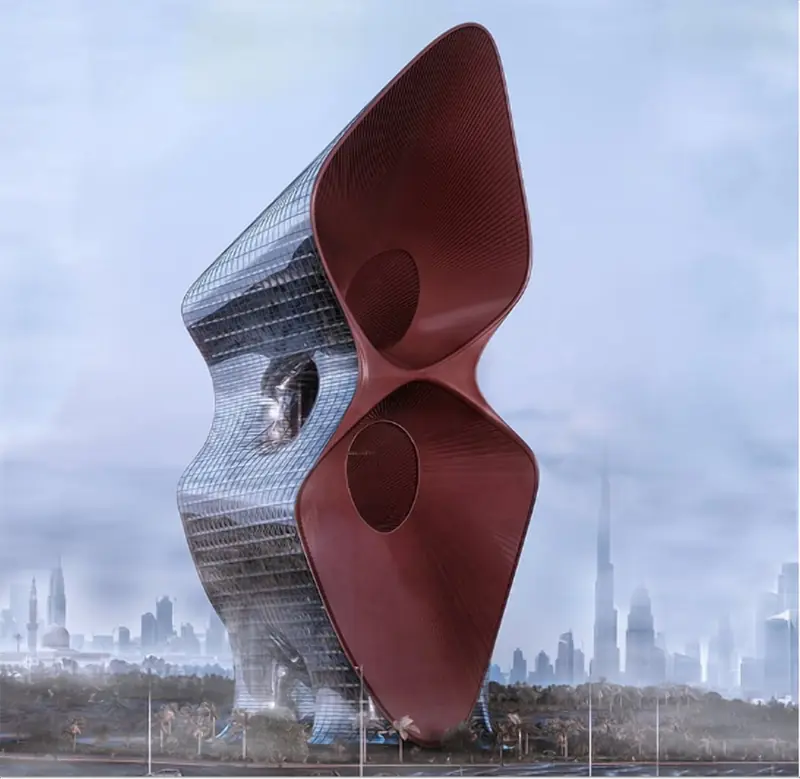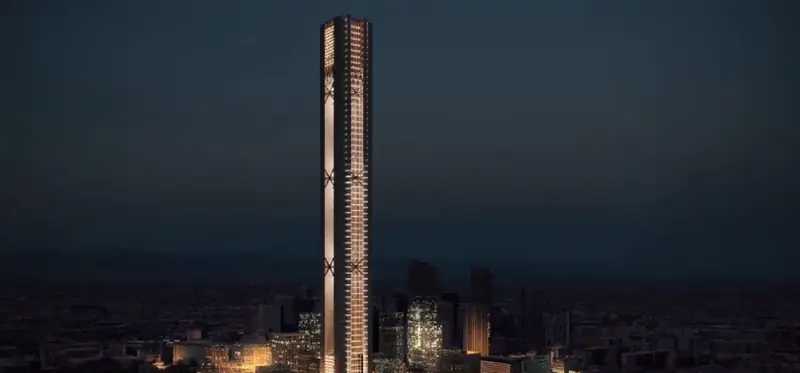
One of the biggest challenges for a power grid dominated by clean energy is the unpredictability of certain renewable sources. Sometimes, when solar energy is needed, clouds roll in, or the wind dies down just when wind energy is required.
That’s why energy storage is crucial, and the brightest minds on the planet are currently working on developing effective solutions.
Skyscrapers with a New Purpose
Recently, the architectural and engineering firm Skidmore, Owings & Merrill (SOM), known for designing the world’s tallest building—the Burj Khalifa in Dubai (828 meters)—announced a partnership with Energy Vault, a company specializing in energy storage. The goal of this collaboration is to develop massive gravitational energy storage systems that will operate within skyscrapers reaching heights of up to one kilometer.
The partners plan to create a skyscraper that will utilize an electric motor to lift giant blocks when energy demand is low. These blocks will store electricity as “potential” energy. When demand arises, the blocks will descend, releasing energy that will be converted back into electricity, according to CNN.
This method of energy storage could eliminate the need for fossil fuels, noted Bill Baker, a partner and consultant at SOM and the structural engineer for the Burj Khalifa.

Achieving Net Zero Requires New Storage Solutions
According to the International Energy Agency, if the world wants to achieve net-zero emissions by 2050, it must develop grid storage or technologies connected to the grid that can store energy and use it as needed.
Lithium-ion batteries, popular in electric vehicles, cannot solve the problem on their own. Primarily, this is because they are not capable of storing energy for extended periods.
However, pumped hydroelectric storage can handle this task, as it is already widely used for storing renewable energy. In this case, a turbine pumps water from a lower reservoir to an upper reservoir during off-peak hours. When demand spikes, the water is released and flows through the turbine, generating electricity. But there’s a catch: such a system requires hilly terrain and a lot of space.
The above-ground tower from SOM and Energy Vault, which could range from 300 to 1,000 meters in height, will feature hollow structures resembling elevator shafts for moving the blocks. At the same time, there will be space within the tower for residential and commercial areas. (The companies are also considering integrating pumped hydro energy into skyscrapers, where water would be used instead of blocks).
Ultimately, it will be possible to store several gigawatt-hours of energy. This is enough to power multiple buildings, said Robert Piconi, CEO of Energy Vault.
By the way, Energy Vault recently created the world’s first commercial hydro-gravitational energy storage system without pumps in China. The 150-meter-tall building is designed solely for energy storage (not for living). The system has a capacity of 100 megawatt-hours.

The Taller, the Better?
New opportunities for utilizing renewable energy will help offset the carbon footprint of super-tall buildings. Currently, the building and construction sector accounts for nearly 40 percent of global greenhouse gas emissions.
To tackle this issue, buildings are being equipped with top-notch insulation, alternative building materials with lower carbon content, and more. Some structures are literally going green. For example, Italian architect Stefano Boeri has created towers in Milan covered with trees and shrubs and has developed a similar project for buildings in Dubai.
However, towers are getting taller and more numerous. This situation is driven by demand caused by hyper-urbanization, which pushes people into cities where living space is scarce.
While only 235 buildings over 200 meters tall were constructed worldwide from 1900 to 1999, last year alone saw the completion of 179 skyscrapers of that height or taller.
